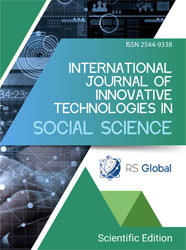TRANSFORMATIONS OF MEDIA PRACTICE IN ALGERIA WITHIN THE ELECTRONIC ENVIRONMENT AND EXECUTIVE DECREE NO. 20/332: A FIELD STUDY ON A SAMPLE OF ALGERIAN JOURNALISTS
Abstract
The objective of this study is to examine the reality of media practice in Algeria in light of Executive Decree No. 20/332, which regulates online media activity and the right of reply and correction, The issuance of this new decree comes at a time when the Algerian media landscape is witnessing intense debate over the increasing blocking of electronic news websites in recent months under various pretexts, while the government maintains that its intention is merely to regulate the sector rather than restrict freedoms.
Based on this premise, the study adopts the descriptive survey method to explore the state of media practice under the decree from the perspective of a sample of Algerian journalists. The participants were selected using a simple random sampling technique to respond to a questionnaire specifically designed to achieve the study’s objectives.
References
Doumou, A. (n.d). Terminology of Educational Sciences: Arabic-French – English.
elHamid, M. A. (1993). Audience Studies in Media Research (1st ed.). Cairo: Alam Al-Kutub.
Hashmi, M. (2014). The Decree as a Legislative Mechanism in the Algerian Legal System. Al-Ijtihad Journal for Legal and Economic Studies.
Khandakji, M. A., & Khandakji, N. (2012). Research Methods: A Contemporary Educational Perspective. Jordan: Modern Book World.
Mersli, A. B. (2010). Research Methods in Media and Communication Sciences (4th ed.). Algiers: University Publications Office.
Researchers, G. o. (s.d.). Al-Mu‘jam Al-Wasīt. Cairo: Academy of the Arabic Language.
Tamar, Y. (2017). Methods and Techniques of Research in Media Studies. Algiers: University Publications Office.
Views:
40
Downloads:
12
Copyright (c) 2025 Dalal Oulmi, Nadir Lamari, Khouloud Albekri Abdalkader

This work is licensed under a Creative Commons Attribution 4.0 International License.
All articles are published in open-access and licensed under a Creative Commons Attribution 4.0 International License (CC BY 4.0). Hence, authors retain copyright to the content of the articles.
CC BY 4.0 License allows content to be copied, adapted, displayed, distributed, re-published or otherwise re-used for any purpose including for adaptation and commercial use provided the content is attributed.















